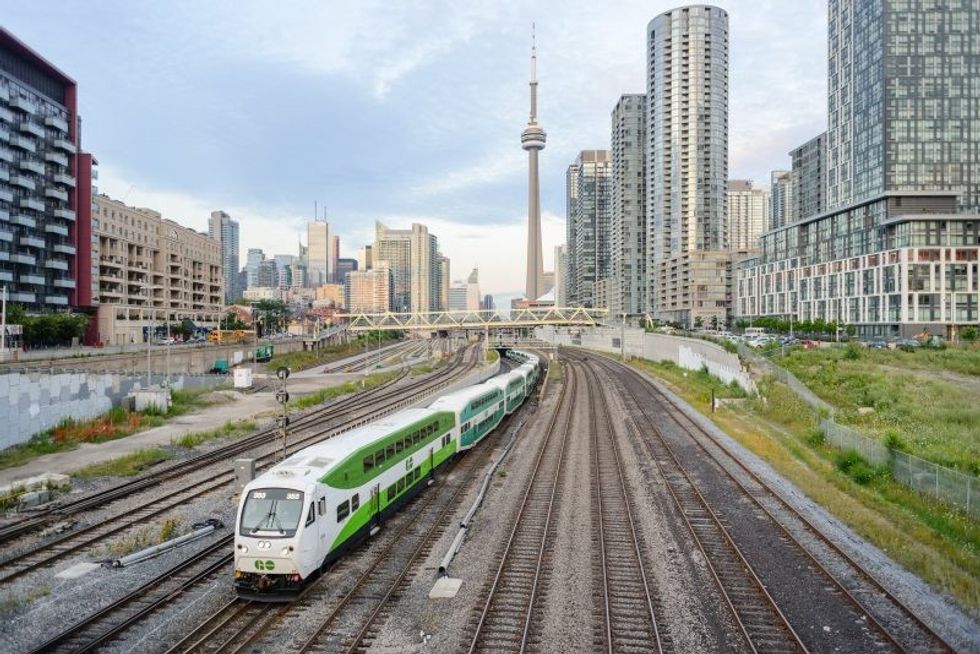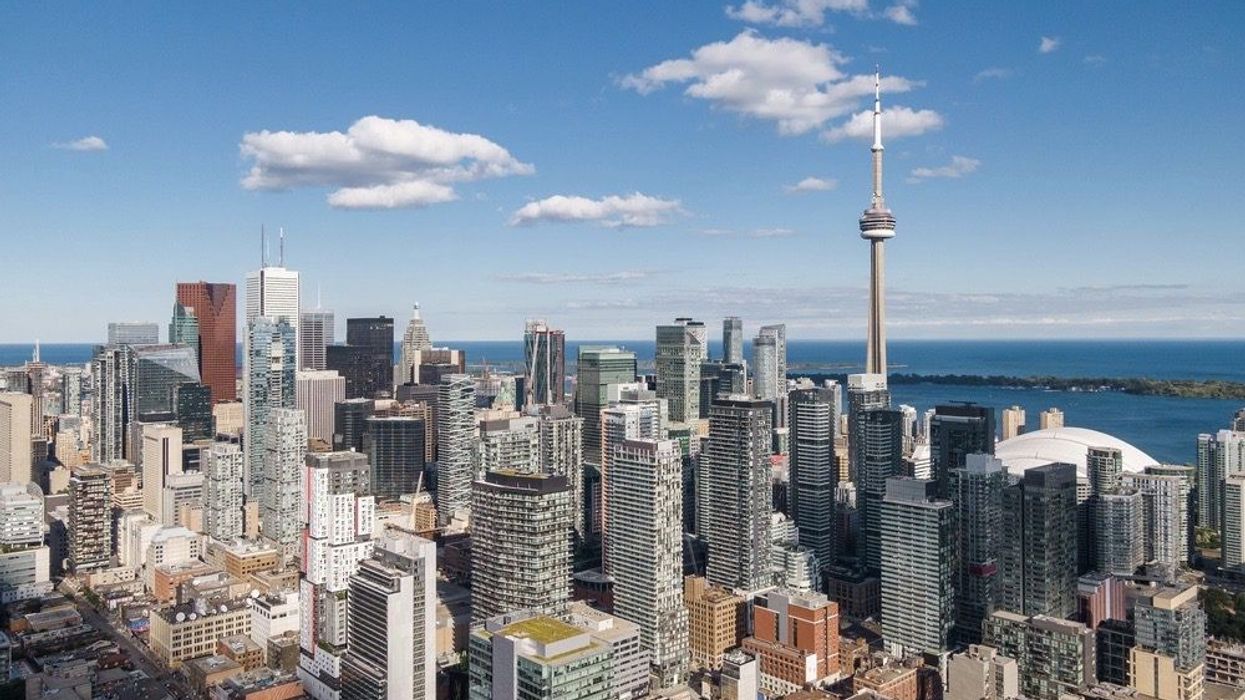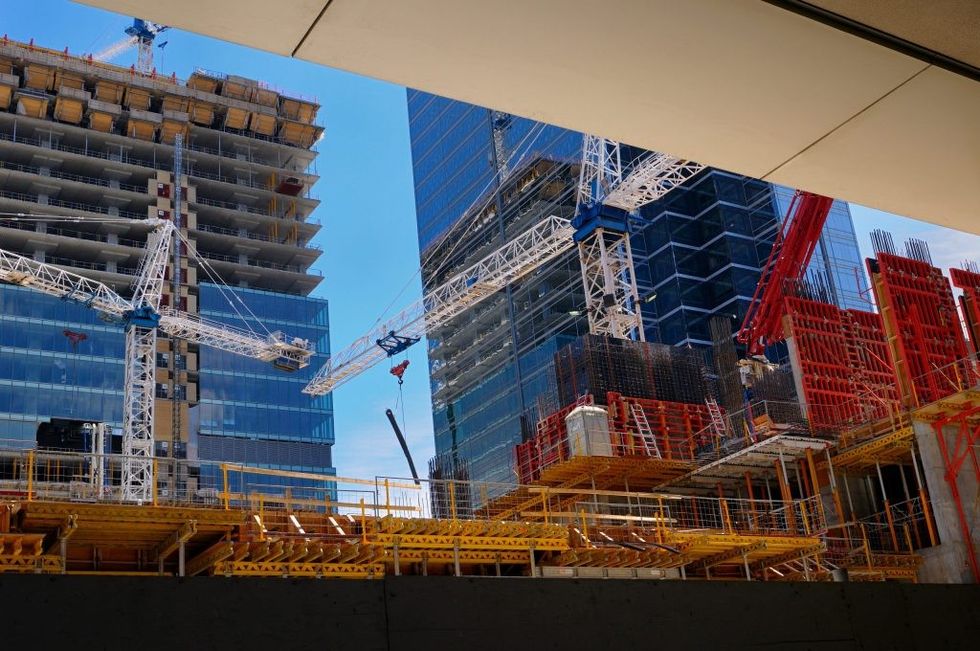In a city of perpetually competing interests, Toronto’s newly-adopted -- and highly controversial -- inclusionary zoning policy (IZ) has become a conversation-dominating issue.
Between sky-high home prices, intense bidding wars, and a relentless lack of supply, Toronto’s real estate market dialled up the drama in 2021, giving both industry professionals and everyday residents something to talk (and stress) about.
And inclusionary zoning has become a particularly hot topic.
Designed to help ease affordability efforts in the notoriously pricey city, an inclusionary zoning policy is a land-use planning tool that requires new residential developments to include affordable housing, where some rents or the cost of ownership will be less than the increasingly unattainable marketplace allows. In the Promoting Affordable Housing Act, passed in 2016, Section 35.2 contains express permission for municipalities to implement inclusionary zoning policies to create mixed-income housing.
READ: STOREYS’ 2021 Real Estate Project of the Year: One Delisle
After a decades-long battle between the City and the Province, Toronto exercised its right to do so in early November, when council voted in favour of the inclusionary zoning policy. The idea is to add affordable housing via shiny new residential buildings in a city of endless construction.
Now, zoning bylaw amendment and draft implementation guidelines will make it mandatory for certain new developments around Protected Major Transit Stations Areas (PMTSAs) to include affordable rental and ownership housing units beginning in 2022.

Inclusionary Zoning will secure five to 10% of condominium developments (over minimum unit thresholds) as affordable housing, increasing gradually from 8% to 22% by 2030, says the City. The amount of affordable housing required will vary depending on where in the city the development is located and whether the units are intended for rental or ownership, with the highest requirements in the downtown area, followed by midtown and Scarborough Centre.
“Toronto's Inclusionary Zoning framework sets out foundational requirements for affordable housing to be incorporated on a consistent basis in new developments and ensures affordability is maintained for 99 years,” reads a City-issued press release from November 9.
The policy will be closely monitored and reviewed after one year to allow for adjustments that may be required, including changes to the phase-in and/or set aside rate, alterations to the minimum development size threshold, and any other changes needed to ensure market stability and production of affordable housing units, says the City.
"This comprehensive Inclusionary Zoning policy will get more affordable housing built in our city. Toronto's plan supports its hard-working residents with low-to-moderate household incomes, builds inclusive communities, and helps to ensure that affordable housing remains available well into the future,” said Mayor John Tory. “I'm pleased that City Council adopted this plan, which will help the City achieve its target of approving 40,000 affordable rental and 4,000 new affordable ownership homes across Toronto by 2030. Policies like this one are the right move forward to get thousands of homes built and it will ensure that our city remains vibrant and strong as it continues to grow."
The policy is the first of its kind in Ontario, but has been adopted in other places in North America in recent years; most prominently, south of the border. But -- while acknowledging its merits -- the World Bank points out, the success rate of inclusionary zoning has been pretty, well... underwhelming.
READ: “A Bad Plan”: Will Toronto’s Inclusionary Zoning Policy Worsen Affordability?
“Reviews of the impact of IZ policies highlight that even though IZ regulations add to the supply of affordable housing, they tend to produce small numbers of homes, and at a potentially substantial cost,” writes the World Bank. “To date, IZ programs have played a relatively small role in meeting the needs for affordable housing in the United States.”
In the US, it is estimated that inclusionary zoning programs nationwide have led to the creation of approximately 150,000 units over several decades, says the World Bank. “In contrast the US Department of Housing and Urban Development’s largest rental assistance program -- housing choice vouchers -- serves approximately 2 million households, and the Low-Income Housing Tax Credits Program has created more than 2 million affordable homes. Low production obviously limits the potential of IZ to promote social inclusion for low-income recipients,” the Bank writes.

The undeniable reality is that Toronto -- and many parts of the country, frankly -- is in the midst of an alarming affordability crisis that shows little sign of easing. That is something everyone can agree upon. It’s the solution to that crisis that has become a topic of increasing debate at dinner parties, on online forums, and within the walls of City Hall.
Local critics argue that inclusionary zooming will only slow construction of much-needed homes and hike up prices in the process.
Richard Lyall, president of the Residential Construction Council of Ontario (RESCON), says that inclusionary zoning framework is not an effective solution to tackle Toronto’s housing supply problem. “It will likely penalize those buying market-priced units as the costs will be passed on to them,” says Lyall. “In effect, new home buyers will end up shouldering the added costs of providing the affordable housing. The policy will end up hurting those on a limited budget or who are barely able to put together enough funds for a mortgage.”
Admittedly, it’s difficult enough for today’s young (would-be) first-time homebuyers to enter the market, even those with decent paying jobs. Without affluent parents stepping in to help ease the burden, saving for a down payment on a Toronto home could literally take decades for today’s independent young professional -- even if they make $200K annually.
“The irony here is that qualified buyers might ultimately have to move to the list of affordable home seekers,” says Lyall. “The city, in effect, is placing the burden solely on the back of purchasers of new homes at a time when housing supply is already under great pressure and affordability is more elusive than ever. The policy is not going to materially add to the aggregate supply of housing overall. In fact, it could have a chilling effect on future projects and make some untenable, leading to fewer condos being built.”
READ: Is Ontario Finally Ready to Tackle its Housing Affordability Crisis?
The policy affects new rental developments as well, says Lyall. “So, in the end, the cost of affordable rental units will be borne by other unit holders. The policy is effectively regressive,” he stresses. “Buying land and constructing a building in Toronto doesn’t come cheap. Developers operate on tight budgets and, if they can’t make money, they won’t build. In turn, that will lead to fewer housing units.”
Indeed, the World Bank stresses that, in order for inclusionary zoning to produce homes, they must offset developers’ potential losses or even enhance the overall profitability of a residential development.
Currently, Toronto's inclusionary zoning mandate will include buildings with over 100 units. The obvious concern with this is that developers will simply build units with 99 units or fewer, defeating the purpose of increasing the city's housing stock in the process. However, the City's policy has included a minimum development size of 100 units on many sites within designated PMTSAs to combat this.
The impossible-to-ignore reality is that -- at a time when people in many other industries are still picking up the pieces from the pandemic's blow to both life and business -- most of Toronto’s developers aren’t hurting for profit these days. “The private development industry has been very successful even during the pandemic, and that’s good for jobs and for the economy, but for the health of the city itself and the economy, they have a role to play in increasing the supply of affordable housing,” says Mayor Tory.
Still, not everyone thinks developers and -- subsequently, condo buyers -- should bear the brunt of (an attempt at) the recovery of the affordable housing market.
"For a long time, the GTA was operating on the idea that 'development pays for development' but inclusionary zoning is taking it a step further and adds a direct tax on new residents (renters and buyers) and puts the burden of taking care of the most vulnerable populations on them instead of spreading it among ALL the residents of the city or the province through regular tax," says Naama Blonder, architect and urban planner at Smart Density. "It's problematic and unfair and discriminatory against new residents."
The fact that Toronto is introducing inclusionary zoning, however, indicates how bad the situation has become, says Blonder.
Jason Mercer, chief market analyst at the Toronto Regional Real Estate Board (TRREB) says that TRREB has commended the City of Toronto for numerous initiatives they've had over the past year dealing with housing supply, including inclusionary zoning. “But, at the same time, the devil is always in the details, and I think it’s important to include that they are going to revisit the policy over time to make sure that it’s having the desired effect and there aren’t unintended consequences,” says Mercer. “It’s one of those policies you need to track and adjust as need be.”
Of course, inclusionary zoning is just one strategy to tackle a very complex issue.
“I think the inclusionary zoning is a piece of the broader issue, with is affordable housing supply, or lack thereof -- in not only the city, but the GTA and the Greater Golden Horseshoe,” says Mercer. “We are seeing different levels of government approach it from a number of angles, which I think on its own is important. If you looked at the housing situation five years ago, there wasn’t nearly as much of a focus on supply as there was on demand-side issues.”
So, what are the more effective alternatives to address the city’s ever-growing supply issues? It depends on who you ask.
“If the city wants to tackle the housing affordability crisis, it should instead remove barriers that strangle growth,” says Lyall. “Instead of more regulations, waiving density limits so developers can build higher is a better option. Reducing red tape, streamlining the approvals process, and giving developers a break on development charges would be a much better approach to the housing supply crisis in the GTA.”
“As part of its Official Plan review, the city could also opt to ease zoning restrictions to allow developers to build more mid-rise buildings, semi-detached homes, townhouses, and multi-plex buildings in neighbourhoods that presently allow only single-family homes,” says Lyall. “This would help speed-up the building timeline, as developers wouldn’t have to keep seeking site-specific rezoning.”
Inevitably, there are those on the other end of the spectrum who say that the inclusionary zoning framework actually isn’t strong enough to make a notable difference.
In an open letter to Mayor Tory and City Council in advance of the vote for inclusionary housing, local organization Progress Toronto called for a “bolder” inclusionary zoning policy. And by bold, they suggested that 20 to 30% of the units in most new residential developments should be affordable to low and middle income renters, as opposed to the current recommendation that has low set-aside rates and a slow phase-in period.
In the letter, Progress Toronto highlights that Toronto has (nearly) five times as many cranes in the sky as any other city on the continent and has built record-breaking amounts of new high-rise housing in the past decade.
“But despite this surge in supply, thousands of people across our city cannot afford the housing they need,” reads the letter. “To put into perspective how consequential a strong inclusionary zoning policy would be, if we had strong inclusionary zoning ten years ago, Toronto would have built 30,000 units of affordable housing rather than the 4,090 it built in the same ten-year period.”
READ: Will Ending ‘Archaic’ Exclusionary Single-Family Zoning Solve Ontario’s Affordability Crisis?
As we move forward with the inclusionary zoning policy, the most important consideration, stresses TRREB's Mercer, is that the City remains flexible and constantly assessing the positive and negative consequences of the policy.
“I certainly understand the argument, from an economic standpoint, that the cost will get passed down to market-based end-users,” says Mercer. “But that will be something the City will have to consider as they are assessing and reassessing the impact of the policy. It will be important to consider that argument, especially considering the fact that it’s difficult to bring market-based supply online as well. The development approval process is long and that impacts the broader supply issue in the GTA, which results in more competition among buyers.”
At the end of the day, nobody is in the market to make the situation worse. This is why, says Mayor Tory, the policy will be reviewed in one year's time.
“We do have to be prudent and make sure it strikes the right balance,” says Tory. “There is a lot at stake in terms of the supply of housing itself, the supply of affordable housing, and jobs and investment.”






















